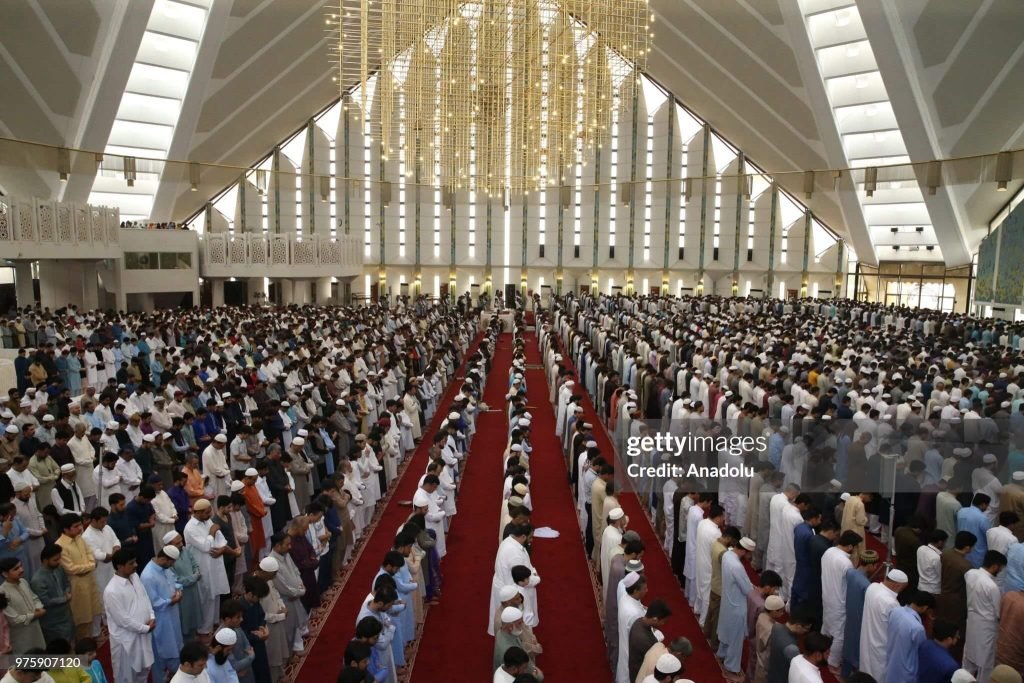Heritage
Shah Faisal Mosque | Islamic History and Architecture
The Shah Faisal Mosque (also called Faisal mosque) is Pakistan’s largest mosque, located in the capital of Pakistan, Islamabad.
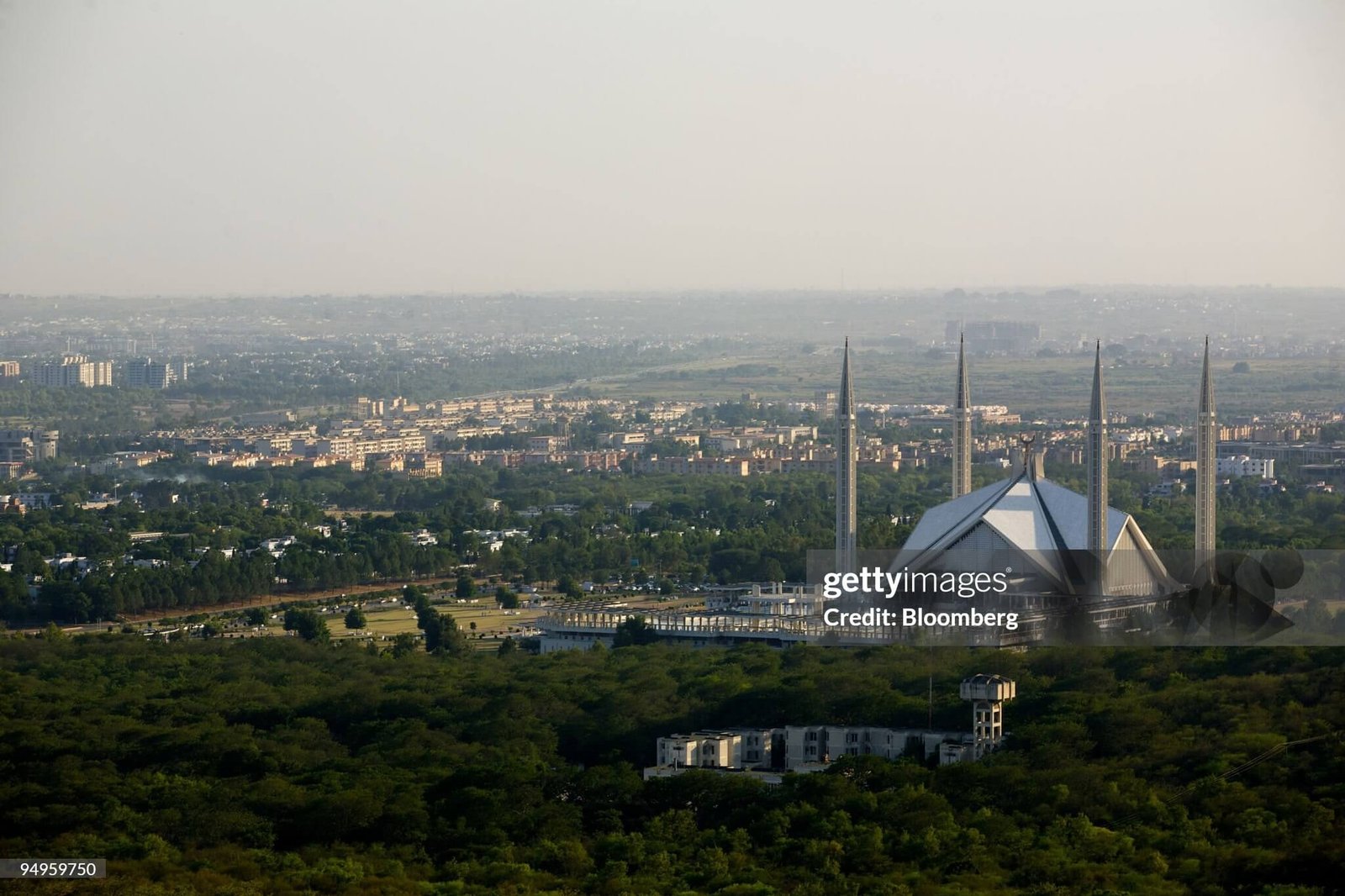
The Shah Faisal Mosque (also called Faisal mosque) is Pakistan’s largest mosque, located in the capital of Pakistan, Islamabad. Shah Faisal Mosque is the fifth-largest mosque in the world and the largest in South Asia. The Shah Faisal Mosque is named after the late King Faisal of Saudi Arabia, as it was he who gave a grant of $28 million for its construction. However, it should be noted that the Public Relations Directorate of the Capital Development Authority (CDA) informed that the total cost of the project was $45 million, of which only $28 million was contributed by the government of Saudi Arabia, while $17 million was provided by the Pakistani government.
The King Faisal Mosque is one of the most fascinating religious structures in Pakistan and has now become a symbol of Islamic history and architecture
The mosque features a contemporary design consisting of eight sides of concrete shell and has become a major tourist attraction in Pakistan. The mosque is a contemporary and influential piece of Islamic architecture. The unconventional design by Turkish architect Vedat Dalokay was selected after an international competition. Without a typical dome (which has been a prominent feature of Islamic architecture), the mosque is shaped like a Bedouin tent, surrounded by four 260-foot (79 m) tall minarets. The design features eight-sided shell-shaped sloping roofs forming a triangular worship hall which can hold 10,000 worshippers.
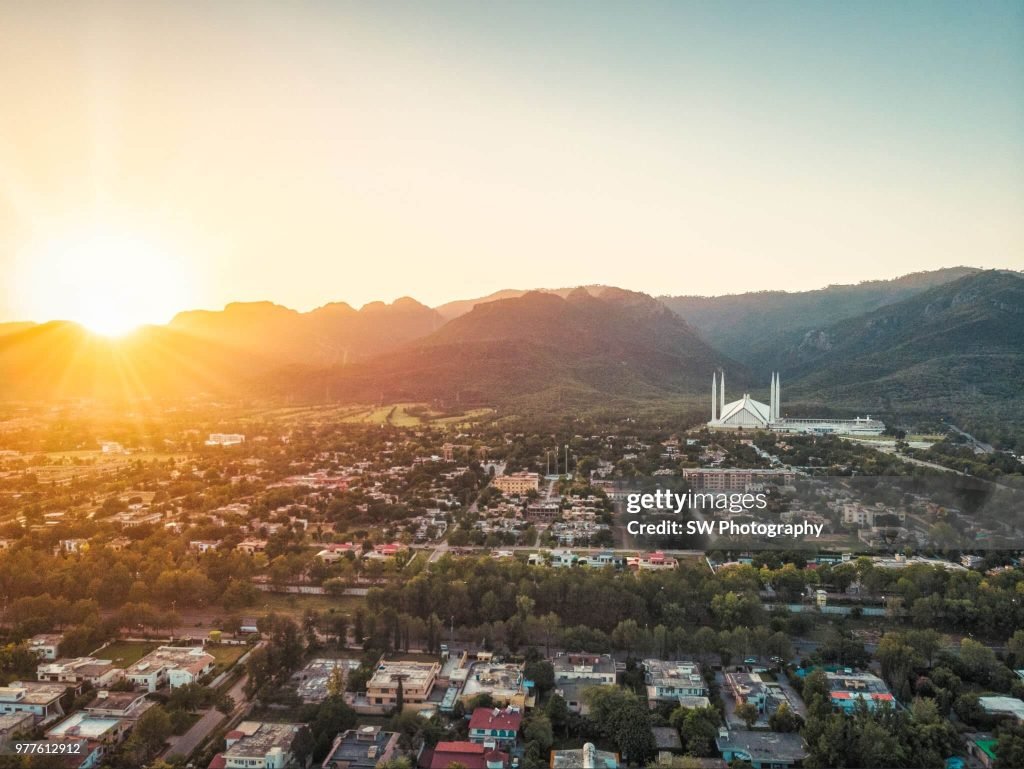
The combined structure of the King Faisal Mosque covers an area of 33 acres (1.4 million sq ft), as it dominates the landscape of Islamabad. It is situated at the north end of Faisal Avenue, right at the foothills of Margalla Hills, the westernmost foothills of the Himalayas. Faisal Mosque was the largest mosque in the world from 1986 until 1993, when it was overtaken by the mosques in Saudi Arabia, including Masjid Al-Haram and Masjid-e-Nabwi. Faisal Mosque is now the sixth-largest mosque in the world in terms of capacity.
History of the Shah Faisal Mosque
The history of King Faisal mosque dates back to 1966, when Saudi King Faisal bin Abdul Aziz made a historic official visit to Islamabad and showed interest in supporting the construction of a national mosque in the capital city of Islamabad Three years later, in 1969, an international competition was held to determine the design for the mosque. Architects from around 17 countries submitted 43 unique proposals for the construction of what would later become the national mosque of Pakistan. Eventually, the Turkish architect Vedat Dalokay won the competition and his unconventional design for the Shah Faisal masjid was approved.

The government of Pakistan allocated 46 acres of land at the foothills of Margalla Hills for the construction of this mosque, and its execution was entrusted to Pakistani engineers and workers.
However, in a tragic turn of events, the Saudi King, Faisal bin Abdul Aziz was assassinated in March 1975 in Riyadh. After his death, the government of Pakistan decided to name the mosque and the road leading to it after the late King Faisal. In October 1976, the successor of the late King Faisal, King Khalid bin Abdul-Aziz Al Saud laid the foundation of the mosque.
The funding, exceeding 130 million Saudi riyals (approximately 120 million USD today), was provided by the government of Saudi Arabia, with King Faisal bin Abdul Aziz playing a pivotal role in securing the funds.
The basic information about the mosque can be found on the foundation stone. Although the Shah Faisal mosque was constructed in 1986, the first prayer at the Faisal mosque was held on June 18, 1988.
The architecture of Shah Faisal Masjid
Instead of the dome-styled design predominantly adopted for mosques in the subcontinent, Vedat Dalokay designed an eight-sided main hall that looked like an Arab’s desert tent.
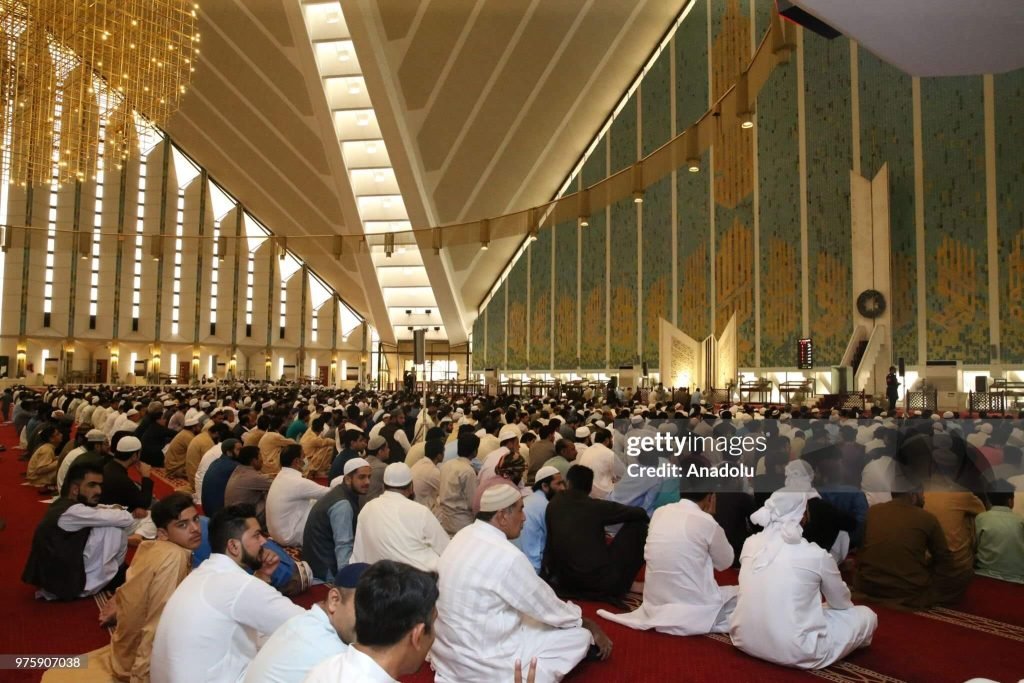
“I tried to capture the spirit, proportion, and geometry of Kaaba in a purely abstract manner. Imagine the apex of each of the four minarets as a scaled explosion of the four highest corners of Kaaba – thus an unseen Kaaba form is bounded by the minarets at the four corners in a proportion of height to base. King Faisal Mosque is akin to the Holy Kaaba in the designer’s imaginative eyes. Now, if you join the apex of each minaret to the base of the minaret diagonally opposite to it correspondingly, a four-sided pyramid shall be bound by these lines at the base side within that invisible cube. That lower level pyramid is treated as a solid body while four minarets with their apex complete the imaginary cube of Kaaba.”
— Vedat Dalokay.
The four minarets on four corners of the main hall of the Shah Faisal Mosque, each 80 m (260 ft) high, are the tallest in South Asia. According to some, the four minarets on each corner of the Shah Faisal Mosque represent the cubic shape of the Kaaba, with the apex of each Minaret completing the invisible cube. However, some believe that the four minarets are designed to pay homage to the first four caliphs of Islam, adding symbolic depth to the structure. The main prayer hall of the Faisal mosque is supported by four concrete grinders, and is inspired by Turkish architecture. Vedat Daloky believes that the design of the Faisal mosque takes inspiration from that of the Kaaba, in an abstract manner of course. The entrance of the Shah Faisal mosque is from the east, where the prayer hall is front by a courtyard. Inside, there is a library, a lecture hall, a museum and a cafe.
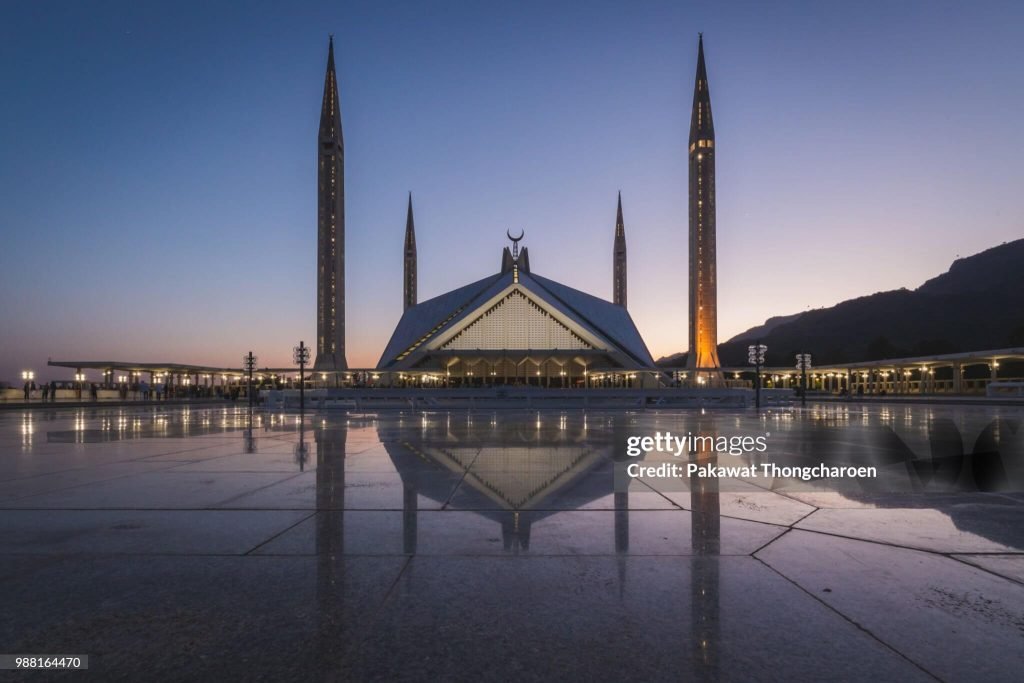
The interior of the main hall of the Shah Faisal mosque is covered in white marble and decorated with mosaics and calligraphy by a famous Pakistan artist, Sadequain. There is also a Turkish-style chandelier inside the main hall, and the mosaic patterns across the west wall have the qalma (the Islamic declaration of faith) written in early Kufic script.
The Qibla Wall is covered with blue and white calligraphic tiles designed by the Turkish artist Mengu Ertel. The interior of the King Faisal Mosque uses Turkish and Pakistani-inspired decorations. It takes an unusual route to its design by combining contemporary and classic Islamic architecture and manages to keep in contact with Islamic architecture by using Ottoman-style minarets and square shapes from the Kaaba.
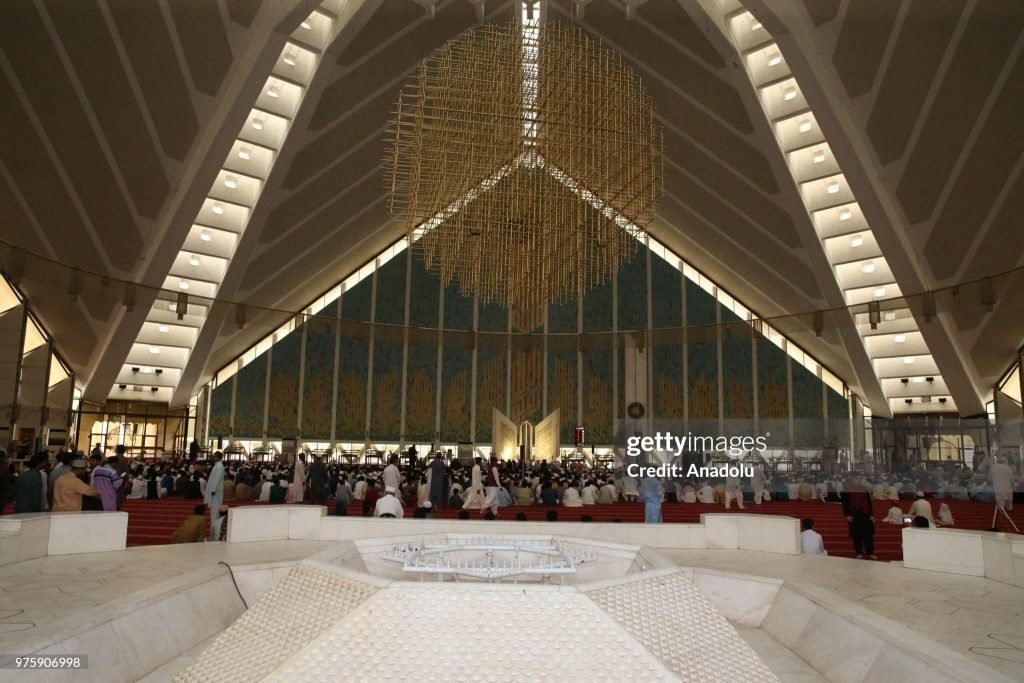
The size of the Shah Faisal Mosque
The King Faisal Mosque can accommodate about 300,000 worshippers. Each of the Mosque’s four minarets is 80 m (260 ft) high (the tallest minarets in South Asia) and measures 10×10 meters in circumference. The inner hall and the courtyards can accommodate about 74,000 people, while the grounds surrounding the mosque have the capacity to contain up to over 200,000 people.
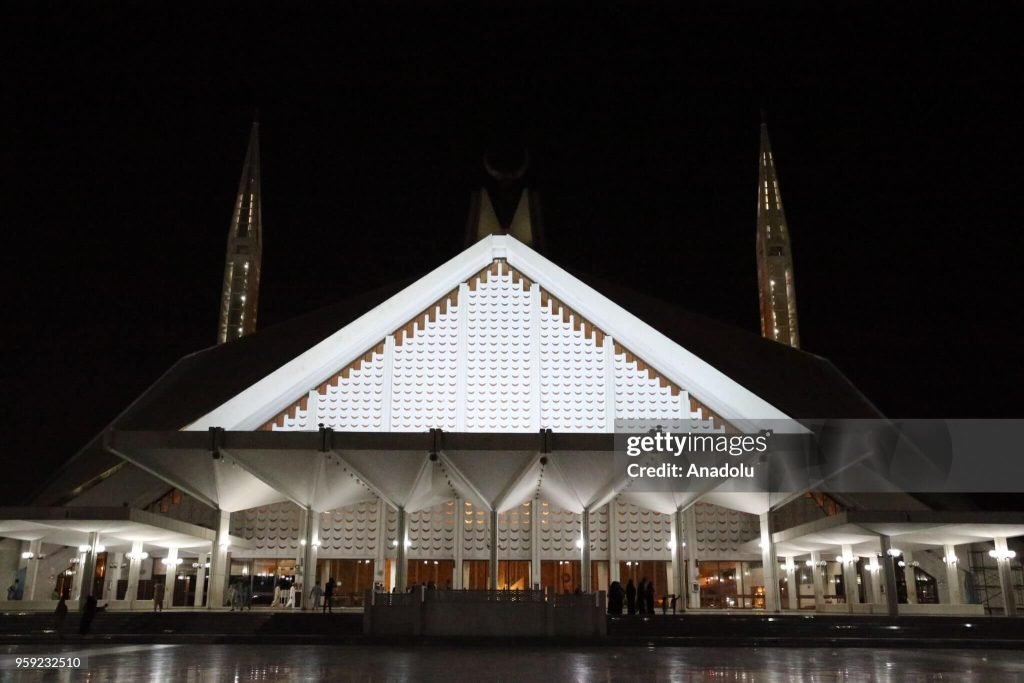
Visit to Faisal Mosque
Shah Faisal Masjid is one of the greatest national arthas become a major tourist attraction in Islamabad, Pakistan. Its unique design and cultural significance draw visitors, including architecture enthusiasts and tourists exploring Islamabad. In fact, tourists who are visiting Islamabad are keen to make a visit to Faisal Mosque.
